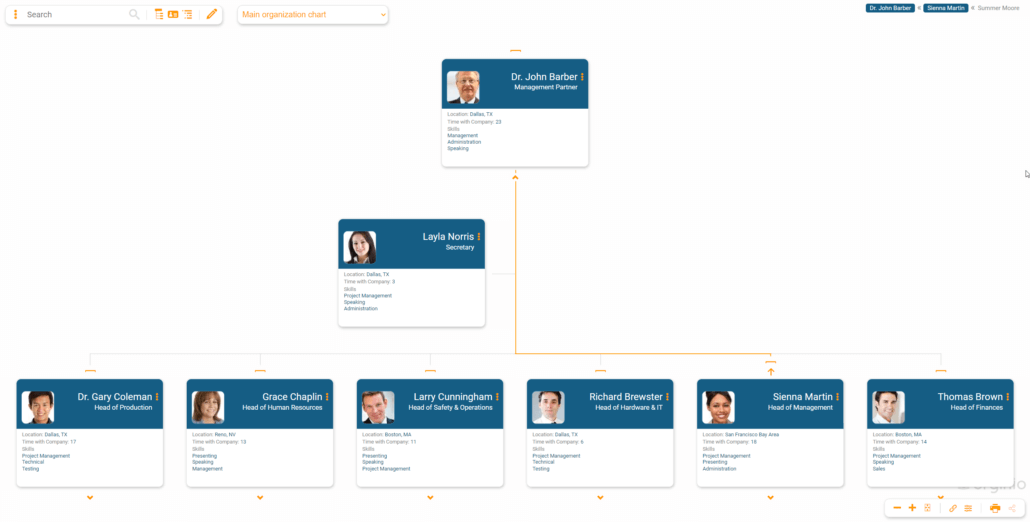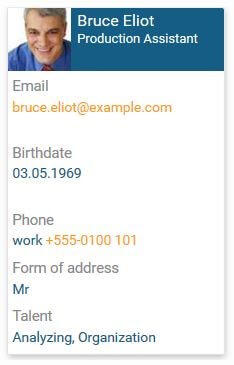
Let us show you how to use your HR data optimally with very little effort.
Here are out top 5 tips to make the best use of your existing data.
1. Benefit from already existing data
An initial inventory will help further. Get an overview of already existing HR data in your company. The variety of data sources can be vast and ranges from databases to simple Excel lists. However, even social networks, which are increasingly becoming the current trend among employees, can bring added value to your HR department.
2. Get an overview of your organisation structure
Once you know your data sources, you should also utilise these. Get an overview of your organisation structure with the HR data. The organisation structure can be replicated in an org chart as shown below. This allows you to represent information about departments, positions and employees.

It can also be an advantage to replicate important information and key figures within the organisation chart that match your corporate objectives. e.g. if you want to find talented employees in your organisation, include the talent information and skills of individual employees in your org chart.

3. Reproduce the information using an appropriate software
With the aid of an appropriate software you can automatically generate your company’s organisation chart. This saves you a great deal of time, because you don’t have to draw the structure manually. When choosing the software, make sure that this can be connected to your existing data sources. Only then you can benefit from your existing HR data.
Bear in mind the retrievability of information. With the aid of search features you should also be able to find all information within your organisation structure.

The availability of the information is extremely important. If you want to retrieve the data anytime and anywhere, a SaaS application is an advantage. In this case, the data is stored externally in a data center and can be retrieved via the Internet (secured by means of login). Make sure that the SaaS provider is reputable, guards your data around the clock and has ISO certifications or seals of approval. Alternatively, the local installation of the software can be on your computer, for example. In all cases it is important to ensure that sensitive data is protected by means of access authorisation. Not every employee should be able to access sensitive data such as salaries, budgets or rates of absence.
4. Pay attention to flexibility and user comfort
It is important that you remain flexible when using your HR data. In the fast-paced world of work, changes and restructuring within the organisation is quite common. This will also affect your organisation chart. Make sure that you can adapt it quickly and easily. A drag & drop function is very convenient here, so that you can move departments, jobs or employees to the appropriate position in the organisation chart.
5. Maintain your HR data in an orderly manner
The most beautiful organisation chart will not help you much if it is not up-to-date and accurate. Only use high-quality data that is up-to-date, complete and correct. In addition to data quality, data availability and security play an important role. You should be able to access the data easily and at any time. If you store your data on the Cloud, make sure that the external data center is reputable.
If you’d like to find out more about what you can do with your existing HR data, don’t hesitate to get in touch with our friendly team.

